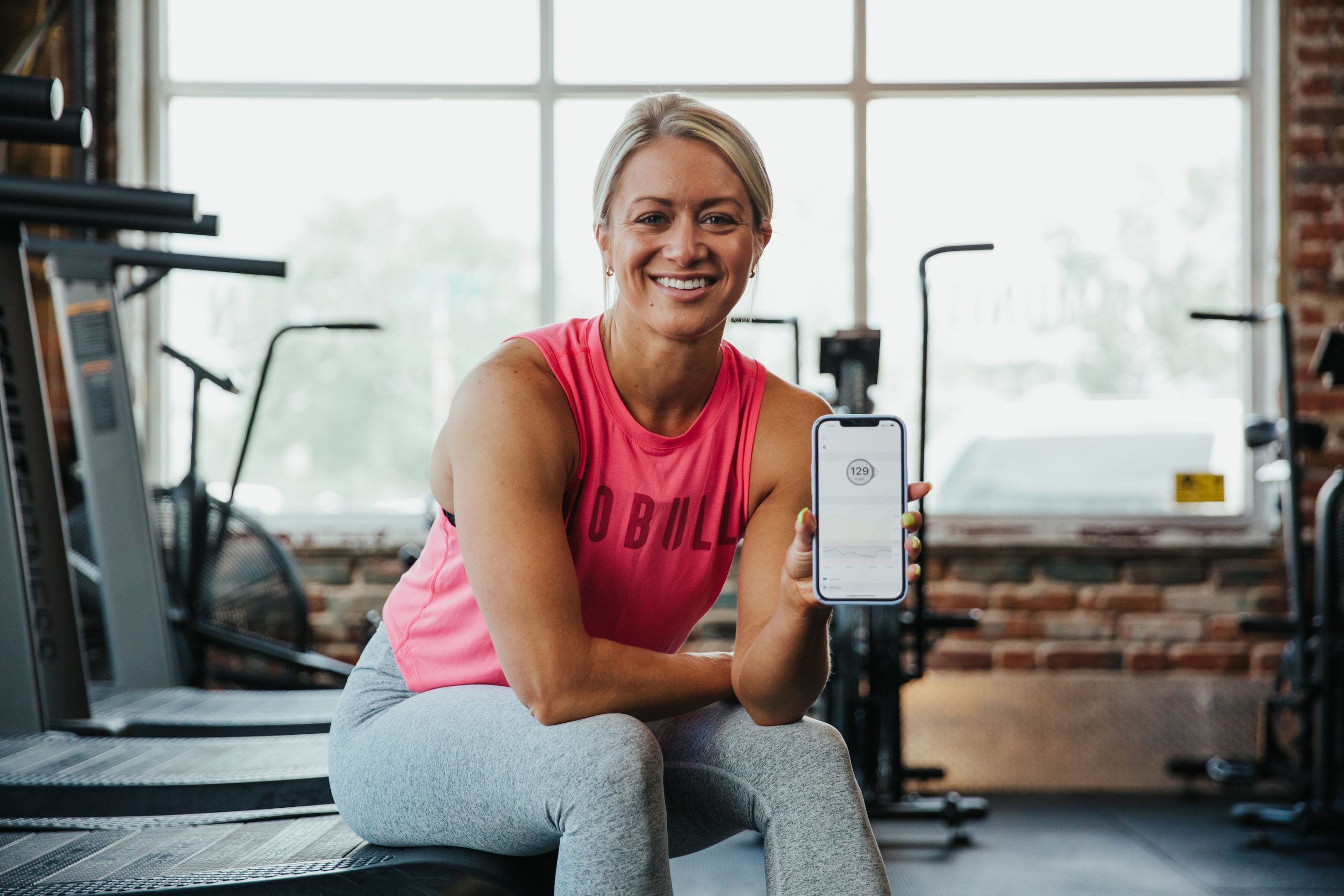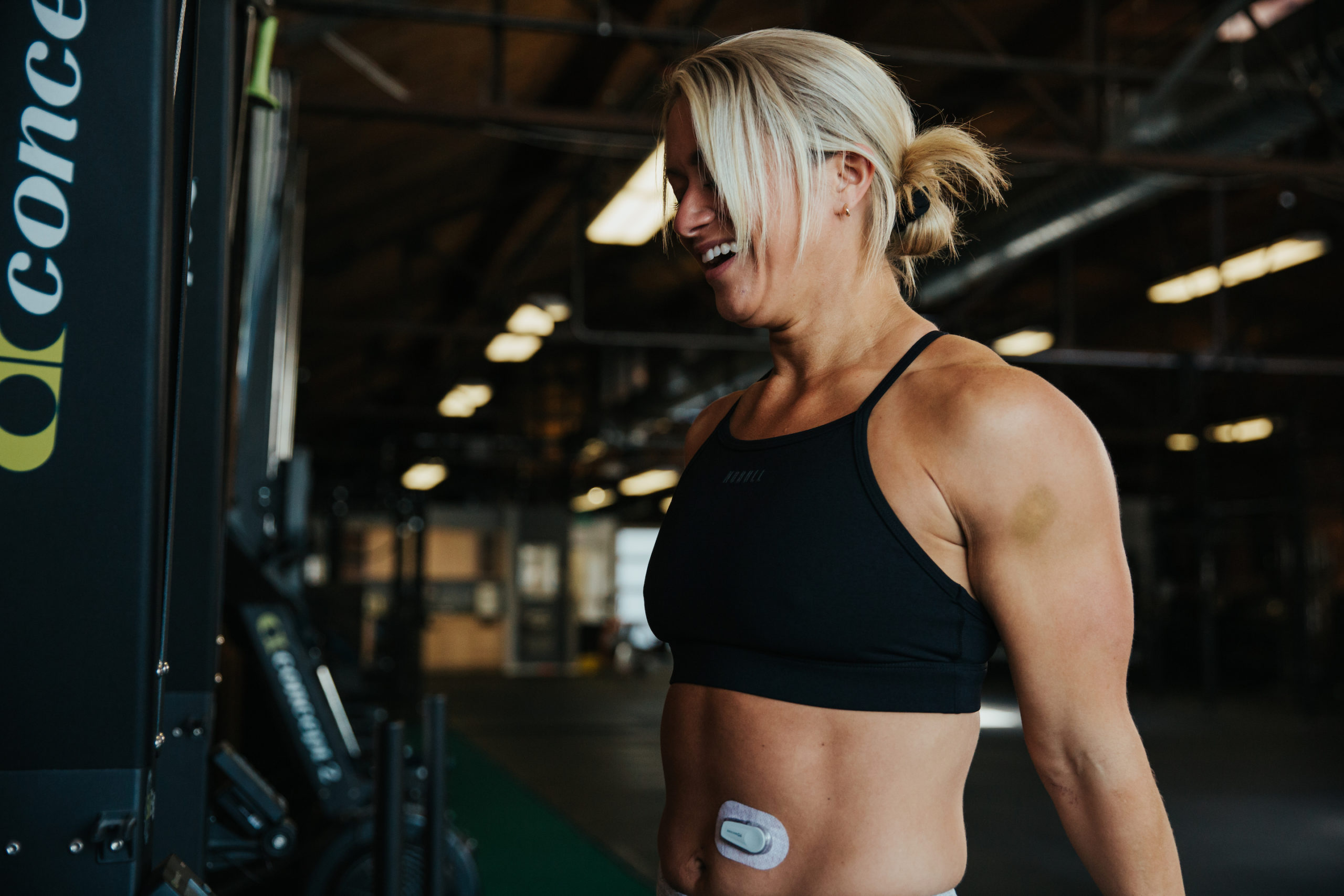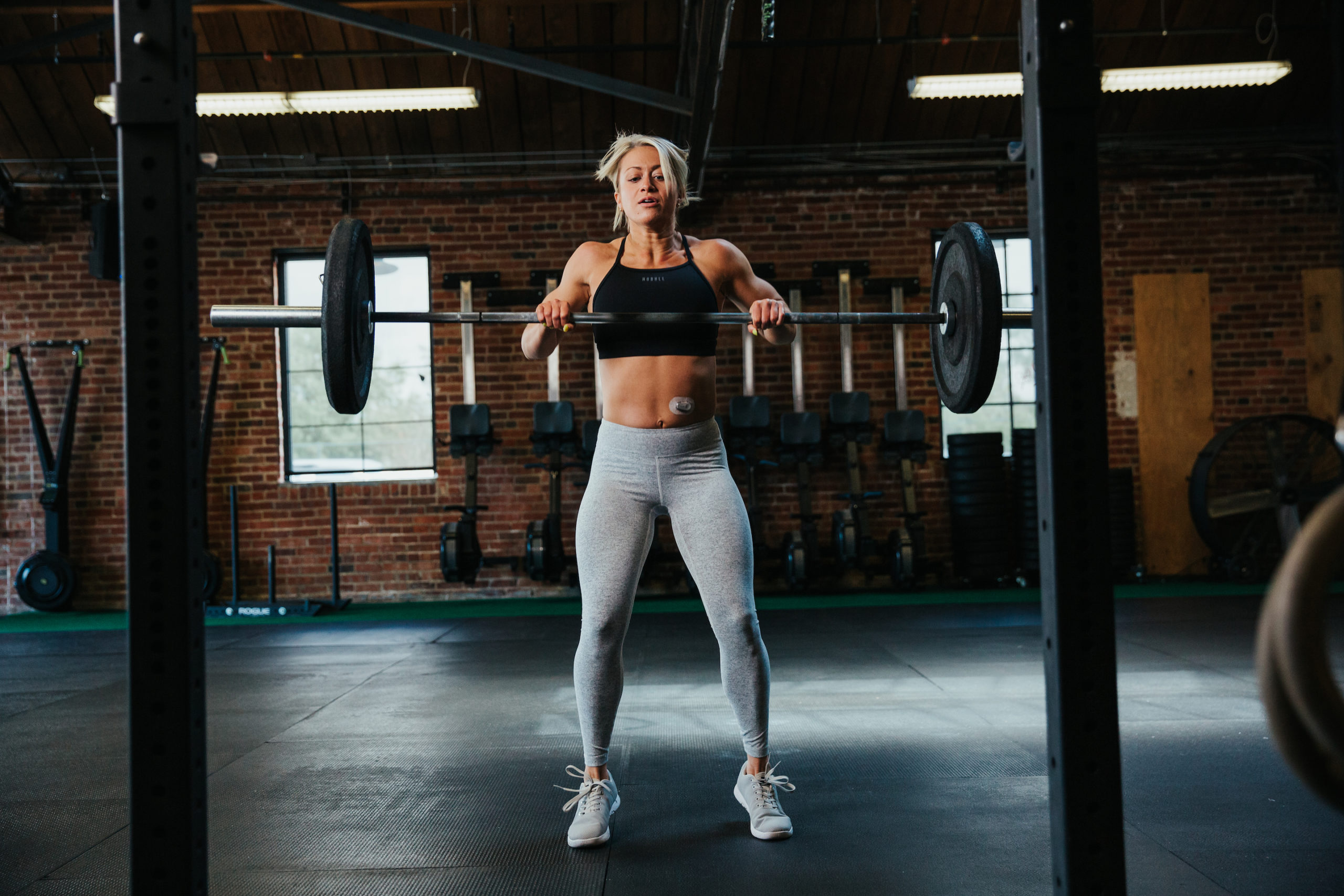Type 1 diabetes (T1D) is a full-time job that I’ll be doing for the rest of my life. Luckily, I found CrossFit more than 10 years ago, and with the sport, technology, and gaining knowledge about food and fitness, my condition has become more manageable.
Having T1D means my pancreas doesn’t produce any insulin to regulate my glucose levels. So, things like listening to my body, counting carbohydrates, and knowing how to refuel after workouts are not just good ideas but essential for my health.
To keep my glucose levels in a healthy range, I calculate my insulin dosages and wear a continuous glucose monitor (CGM), my Dexcom, that keeps tabs on my levels by sending the readings to my cell phone.
While many see diabetes as a setback — don’t get me wrong, it has its moments — it’s helped me learn valuable lessons that make me not just a better CrossFit athlete, but a healthier person.
Here are five things I’ve learned as a Type 1 diabetic that you can apply to your everyday CrossFit routine.

Be Intentional
Most people join a CrossFit gym with a goal in mind: to feel good in their own skin, prevent chronic disease, or maybe even compete at the highest level. But having a goal without a plan makes it harder to achieve.
To give you an idea, every year for the last 21 years with diabetes, I’ve had a goal of bettering my A1C — a test that indicates how well you’re managing your diabetes — but it wasn’t until recently that I saw improvement. Sure, I had been doing the basics like testing my glucose levels and taking insulin, but there was no method to my madness. When I started being intentional by doing things like keeping a food diary, tracking the time my glucose levels were in range and identifying patterns of highs and lows, I was able to make small adjustments that yielded big results.

Check Your Ego
For a long time, I was convinced I didn’t need a medical device to help me manage my diabetes — not because I had it all together, but rather because I was insecure about what other people might think of me wearing something that seemed out of the norm.
I sometimes see the ego issue arise in the CrossFit gym, such as when athletes aren’t achieving depth in their squats but don’t want to strip the weight or when athletes aren’t finishing intervals within the intended time domain but don’t want to scale.
It can be hard to see the importance of having proper mechanics or achieving the right stimulus in the moment, but the second I put my ego aside and focused on the bigger picture — having better diabetes management — I started making major gains.

Have a Game Plan
Different workouts require different strategies. For example, you may maintain a lower intensity to make it through a 30-minute AMRAP, whereas other workouts are all gas, no brakes. You may also thoughtfully place your equipment in ways that cut down transition time, or pivot to a switch grip to increase your chances of getting a PR on your 1-rep-max deadlift.
Similarly, I manage my diabetes differently depending on the workout. While exercise can help increase insulin sensitivity, not all exercise has the same effect on glucose levels. When it comes to endurance-focused workouts, my glucose levels tends to drop, whereas high-intensity workouts can cause them to rise due to the adrenaline stimulating my liver to release glucose.
Keeping my glucose levels in a healthy range during workouts is important because I don’t want to have to stop mid-workout and eat a snack to correct low glucose levels, nor do I want high glucose levels slowing me down with fatigue.
Overall, taking the extra time to develop a game plan for your workout can make or break your training efforts.

Find a Support System
Top athletes have an army of people behind them who are critical to their success — coaches, training partners, agents, sponsors, etc. We’ve even seen athletes move across the globe to join training camps as the benefits of training with other individuals who push their limits are out of this world.
Managing diabetes isn’t a one-man show, either. Having been diagnosed at age 9, I wouldn’t be here today if it weren’t for the support of my family, friends, and medical experts. I’ve asked co-workers, taxi drivers, and even complete strangers to spot me a juice box when I’m desperate to fix low glucose levels.
Whether you’re training for the CrossFit Games or your next endocrinology appointment, having a team or an accountability partner can help you stay on track to reach your goals.

Invest in Yourself
Attention to detail is what separates good athletes from great athletes, and the best CrossFit athletes are willing to do whatever it takes to be crowned Fittest on Earth. They may invest in a cold tub to aid their recovery, remove alcohol from their diet, or start tracking their sleep.
I’m certainly not an elite athlete, but I’m always on the hunt for resources that could help improve my quality of life. To give you an idea, a few years ago, I noticed significant spikes in my glucose levels following meals. After some research, I switched to a new type of fast-acting insulin that works two times faster than my previous insulin, which helped mitigate the spikes.
You might not have to worry about your glucose levels, but maybe you:
- Want to get muscle-up and could invest time in learning progressions.
- Want to become a CrossFit coach and could invest money in taking the CrossFit Level 1 Certificate Course.
- Want to dial in your nutrition and could invest effort into following a meal plan.
Making an investment can feel overwhelming, but answering the question “How will I get to where I want to be if I don’t invest in myself?” may help guide your decision.
Ultimately, Type 1 diabetes has given me the privilege of not only learning the delicate dance of food, fitness, and glucose levels, but also lifelong lessons including making my health a priority, being patient, persevering, and marshaling my resources — universal tools every CrossFit athlete should equip themselves with, too.
Ari Hurst (CF-L2) is Partnerships Manager at CrossFit, LLC.
Photos by Ryan Murphy.